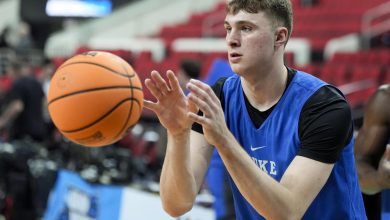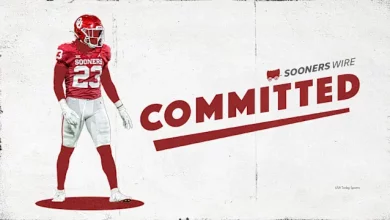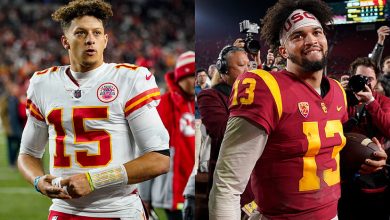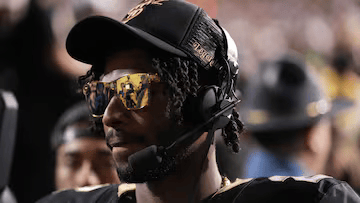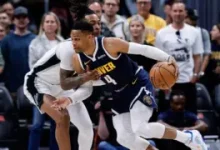QB Caleb Williams joins mostly rookies on field as Chicago Bears wrap up OTAs
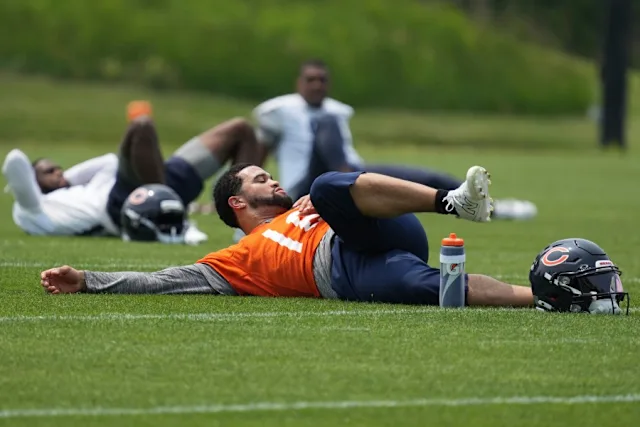
As the Chicago Bears wrapped up their Organized Team Activities (OTAs) in early June, the energy at Halas Hall was noticeably different. A new coaching staff, an overhauled roster, and the arrival of one of the most hyped quarterback prospects in years — Caleb Williams — have all contributed to a renewed sense of purpose and direction for the storied franchise.
But with all eyes on the No. 1 overall pick in the 2024 NFL Draft, these OTAs weren’t just about building chemistry or learning plays — they were about laying the foundation for the Bears’ future. And at the center of that effort stood Williams, sharing the field with a rookie-heavy squad as the Bears start turning the page on years of underachievement.
The Beginning of a New Era
When the Bears selected Caleb Williams out of USC, they did so not just because of his elite arm talent or highlight-reel plays — they saw a leader who could reenergize a fan base and stabilize a position that has long haunted the organization.
Under new head coach Ben Johnson, formerly the offensive coordinator of the Detroit Lions, Chicago’s offseason has been focused, organized, and full of teaching moments. Johnson’s approach during OTAs has been meticulous. He’s prioritized structure, pace, and situational awareness over flash. Williams, despite being a natural playmaker, has embraced the challenge.
“Caleb’s talent is obvious,” Johnson told reporters. “But what we’re really pleased with is how he’s approaching the process. He’s asking the right questions, staying after meetings, and working to master the fundamentals.”
That process includes learning to operate within the pocket, reading NFL defenses, and building chemistry with an almost entirely new supporting cast — much of it comprised of fellow rookies or recent additions.
Mixed Results on the Field
For Williams, OTAs offered a glimpse into the rigorous demands of life as an NFL quarterback. The Bears’ offense is still in the early stages of development, and while there were flashes of the brilliance that made Williams a Heisman Trophy winner, there were also struggles — a natural part of the learning curve.
In a 7-on-7 session early in OTAs, Williams completed 13 of 15 passes — an encouraging sign of his accuracy and command. One of the incompletions drew a pass interference penalty, showing his willingness to test defenses and put the ball in tight windows. But during red zone drills later that week, the rookie found the going much tougher. The offense sputtered, Williams was “sacked” five times (by OTA standards), and only four passes were completed as the defense applied consistent pressure.
One contributing factor to the uneven performance was the absence of several projected starters. Rookie receiver Rome Odunze, selected 9th overall, missed portions of OTAs with minor injuries. Keenan Allen and Darnell Mooney, two veteran targets expected to be key parts of the offense, were not always active. That left Williams working with a mostly rookie or second-team unit — a challenge for any quarterback, let alone a 22-year-old just months removed from college.
Still, coaches weren’t discouraged.
“Some days are going to be tough,” offensive coordinator Thomas Brown said. “But what you want to see is how a quarterback responds. Caleb didn’t hang his head. He came to the next rep ready.”
Building Bonds with Key Teammates
While many of the Bears’ projected starters weren’t full participants in every OTA session, the time Williams did spend with veterans like DJ Moore proved valuable. Moore, now entering his second season in Chicago, is expected to be Williams’ top weapon. Their rapport appeared to grow over the course of OTAs, with Moore serving both as a target and a mentor.
“You can tell he wants to be great,” Moore said after one session. “He’s asking questions, trying to get on the same page. It’s early, but the connection is building.”
Williams also developed early chemistry with tight ends Cole Kmet and Gerald Everett, both of whom could serve as safety valves in the short and intermediate passing game. Everett, a veteran free-agent signing, brings experience from the Rams and Chargers and can help in teaching Williams about the subtleties of NFL route timing and defensive reads.
But perhaps the most intriguing relationship developing is with Odunze, the physically imposing rookie from Washington. Though limited in action, Odunze’s ability to make contested catches and get separation during one-on-one drills caught the attention of both coaches and media.
“If Caleb and Rome can grow together, you might be looking at a special tandem for years,” said Bears insider Adam Hoge. “Their skill sets complement each other — big arm, big target, and both guys are driven.”
Coach Ben Johnson’s Blueprint
One of the defining features of this year’s OTAs was the presence and influence of Ben Johnson. Hailed as one of the brightest offensive minds in football, Johnson turned down several job offers to take the helm in Chicago. His offense in Detroit helped revive Jared Goff’s career and turned the Lions into an NFC contender. Now, he’s tasked with building something similar — but from scratch.
Johnson’s practices have been structured, high-tempo, and competitive. He’s emphasized alignment, tempo out of the huddle, and situational football. For rookies, especially quarterbacks, this can feel like information overload. But Johnson believes that installing high standards early is essential.
“We want these guys to know what it takes to win in this league,” Johnson said. “That starts now — not in Week 1.”
He has also made it clear that Williams will be the Week 1 starter, barring injury. Unlike past Bears regimes that hesitated or waited to start rookie quarterbacks, Johnson and GM Ryan Poles are all-in on Williams. The system is being built for him, the personnel choices reflect it, and the locker room is behind it.
Challenges Still to Come
Despite the optimism, the Bears are far from a finished product. Their offensive line remains a question mark, particularly in terms of pass protection. Williams has been praised for his escapability and ability to extend plays, but in the NFL, relying too heavily on mobility can backfire. Johnson and quarterbacks coach Kerry Joseph are working to help Williams improve his pocket presence and decision-making speed.
There’s also the mental aspect. Williams has shown maturity, but transitioning from college stardom to NFL expectations is no small leap — especially in a city like Chicago, where quarterbacks are scrutinized more than perhaps any other position in town.
Off the field, Williams has embraced the community and the spotlight. He’s been visible at local events, engaged with fans on social media, and has handled press obligations with poise. But the pressure will only mount as training camp nears and the preseason begins.
What’s Next?
With OTAs concluded, players now get a short break before mandatory minicamp and then training camp in July. For Williams, that means studying the playbook, reviewing OTA film, and continuing to build chemistry with receivers through informal workouts.
The Bears’ coaching staff is also expected to fine-tune the offense — including experimenting with tempo, motion-heavy concepts, and two-tight-end sets — all of which should play to Williams’ strengths. Preseason games will provide the first real test against opposing defenses, and while growing pains are expected, the goal is to see steady progress each week.
The 2025 season isn’t about instant contention for the Bears — it’s about progress. For a franchise that hasn’t had a true franchise quarterback in decades, Caleb Williams represents more than hope. He represents a shift in philosophy, a commitment to modern football, and a belief that this time — finally — the Bears got it right.
OTAs are only the first chapter in a long and challenging NFL journey, but they’ve offered enough glimpses of promise to suggest that something special might be brewing in Chicago. With the right coaching, continued development, and patience, the Bears may have finally found the player who can lead them into a new era.
And it all started with a few spring practices, mostly rookies, and one quarterback determined to change a city’s football future.



